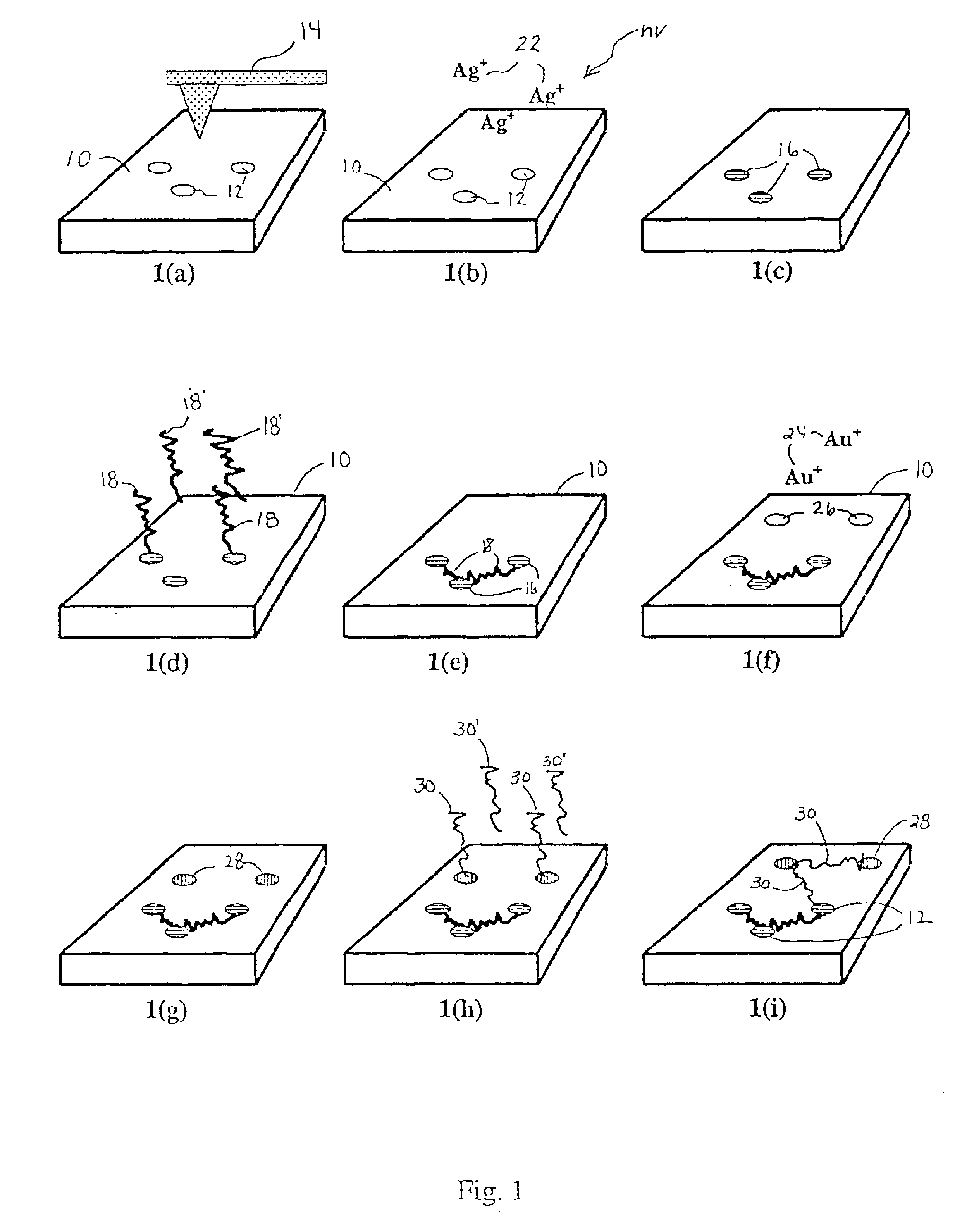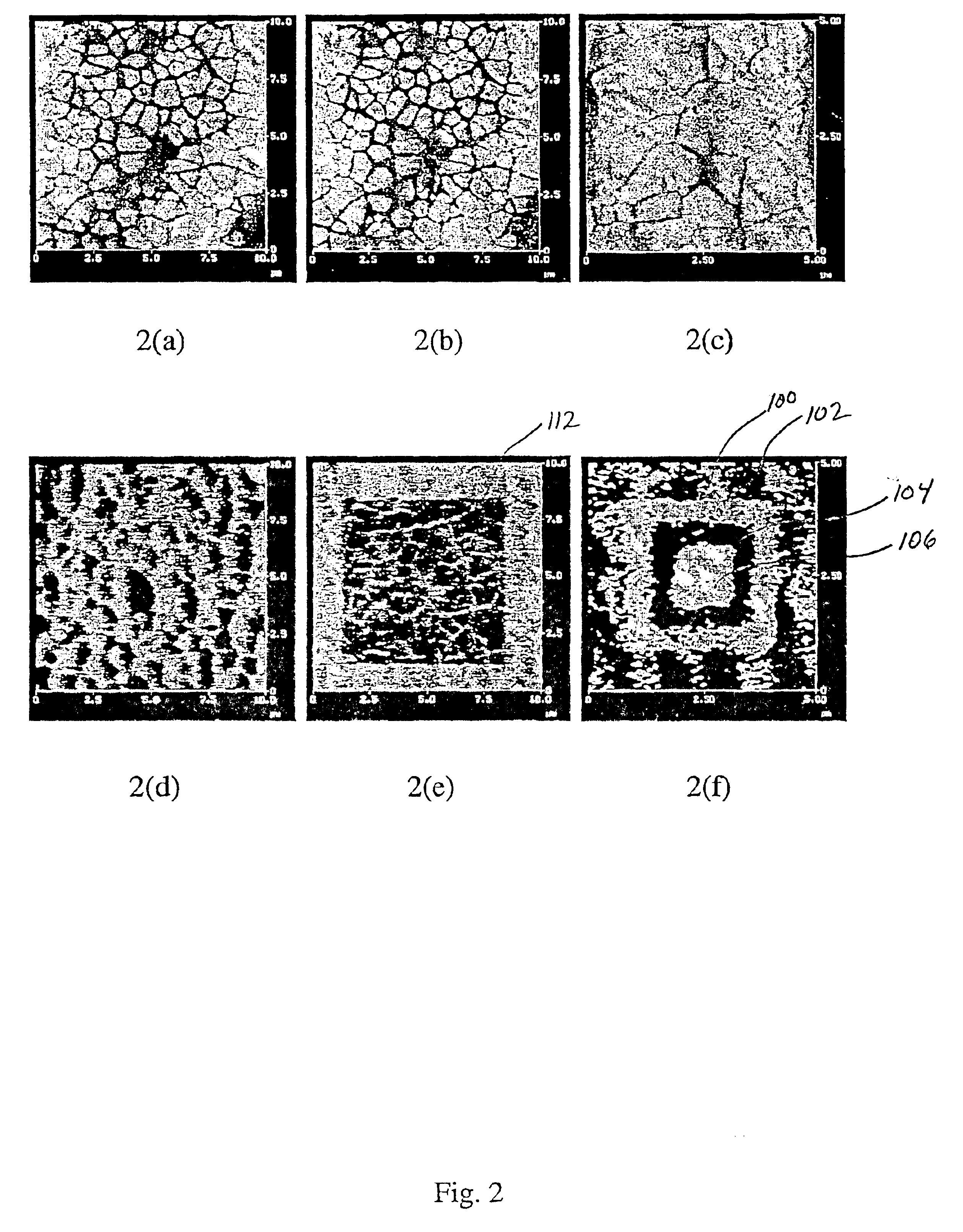Directed assembly of nanometer-scale molecular devices
a molecular device and nanometer-scale technology, applied in the direction of separation process, filtration separation, instruments, etc., can solve the problems of unsolved and inability to position individual nanometer-sized device elements using these previously proposed approaches
- Summary
- Abstract
- Description
- Claims
- Application Information
AI Technical Summary
Problems solved by technology
Method used
Image
Examples
examples
[0034]FIG. 2 is an illustrative example of a lead zirconate titanate substrate patterned in accordance with step 1(a) of FIG. 1. Prior to writing the substrate to orient the domains, contact-mode AFM and piezoresponse force microscopy (PFM) measurements were performed using a commercial instrument (Digital Instruments Dimension 3000 NS-III) to characterize the topography, FIG. 2(a), and polarization distribution, FIG. 2(d), of the surface. To perform piezoresponse measurements, the AFM was additionally equipped with a function generator and lock-in amplifier (DS340, SRS 830, Stanford Research Systems). Platinum coated tips (1>>125 μm, resonant frequency ˜350 kHz, SiliconMDT NSCS12 Pt) were used for these measurements. After characterization of the initial state of the substrate surface, selected portions of the surface were addressed to provide regions of switched polarization.
[0035]The tip of the AFM was biased −10 Vdc and scanned over a square region of the substrate surface to sw...
PUM
| Property | Measurement | Unit |
|---|---|---|
| resonant frequency | aaaaa | aaaaa |
| area | aaaaa | aaaaa |
| grit size | aaaaa | aaaaa |
Abstract
Description
Claims
Application Information
 Login to View More
Login to View More - R&D
- Intellectual Property
- Life Sciences
- Materials
- Tech Scout
- Unparalleled Data Quality
- Higher Quality Content
- 60% Fewer Hallucinations
Browse by: Latest US Patents, China's latest patents, Technical Efficacy Thesaurus, Application Domain, Technology Topic, Popular Technical Reports.
© 2025 PatSnap. All rights reserved.Legal|Privacy policy|Modern Slavery Act Transparency Statement|Sitemap|About US| Contact US: help@patsnap.com



